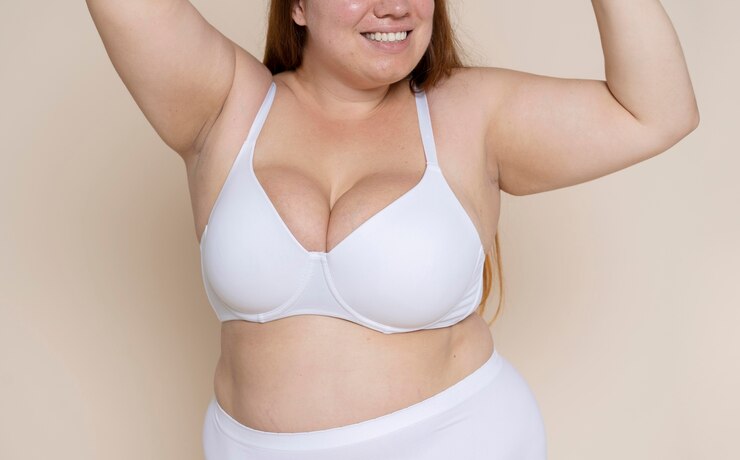Breast Reduction Surgery for Dense Breasts
If you’re contemplating breast reduction surgery and have dense breasts, you’re among many facing similar considerations. Breast reduction offers relief for women seeking to decrease breast size and weight. Despite dense breast tissue, this procedure can effectively reduce volume while preserving a natural aesthetic. Experienced plastic surgeons like Dr. Smiley can expertly perform this procedure to give your breasts a rejuvenated look. As a renowned plastic surgeon in Beverly Hills and Upland, you can trust Dr. Smiley to offer you the best cosmetic services possible.
What Are Dense Breasts?
Breast density is about what your breasts are made of. For some women, their breasts have more glandular and connective tissue compared to fat tissue. Younger women often have denser breasts, while older women might have less dense ones because of hormonal changes. Your family history and lifestyle choices, like what you eat or if your weight changes can affect breast density too.
There are four types of breast density. For better understanding, we have highlighted the names of the categories in an easy way:
- Very Dense Breasts: These breasts have a lot of fibrous and glandular tissue, making it hard to see clearly on mammograms. Women with very dense breasts may need extra tests for better screening.
- Scattered Dense Breasts: This means there’s a mix of dense tissue and fatty tissue. It’s easier to see compared to very dense breasts, but still, there might be challenges in finding problems.
- Moderately Dense Breasts: These breasts have a fair amount of dense tissue, but there’s also some fatty tissue. Women with moderately dense breasts might have a slightly higher risk of breast cancer, and it could be harder to spot issues on mammograms.
- Mostly Fatty Breasts: These breasts have mostly fatty tissue, making it easier to see on mammograms. Doctors can usually spot problems more easily in this case.
Risks Associated With Dense Breasts And How To Assess It
Having dense breasts can make it harder to find cancer, and it also slightly raises the chance of getting breast cancer. This means it’s important for women with dense breasts to talk to their doctors about the best way to check for cancer.
To check breast density, doctors usually use a mammogram, which is like an x-ray of the breasts. A radiologist looks at the mammogram and decides how much dense tissue there is compared to fatty tissue. They put the results into one of four categories. This helps doctors understand the composition of the breasts and plan the best screening strategy for each patient.
Benefits Of Breast Reduction For Dense Breasts
Breast reduction can bring many positive changes to your life:
- Less pain and discomfort
- Improved posture and movement
- Easier to do physical activities
- Clothes fit better
- Less irritation on the skin
- No more bra strap marks
- Feeling more confident
- Mammograms are easier to read
- Reduced sagging of the breasts
- Better sleep
Overall, it makes you feel as good on the inside as you do on the outside.
Breast Reduction For Dense Breast – Considerations
Breast reduction surgery for dense breasts starts with a detailed consultation with a plastic surgeon. During this appointment, the surgeon assesses your situation, including your body, health history, and what you want to achieve with the surgery. This helps them plan the procedure specifically for you.
When considering the surgery, you’ll want to think about:
- Your surgeon’s approach: Every person’s breasts are different, so the surgery techniques vary. The surgeon will choose the best method based on your body and goals.
- Potential risks: Like any surgery, there are risks involved, such as uneven breasts, visible scars, or infections. Choosing an experienced surgeon can help reduce these risks.
- Your desired size and shape: During the consultation, you’ll discuss what size and shape you want your breasts to be after the surgery. If you’re considering implants, you’ll get to see different options and choose what’s right for you.
- Cost and insurance: Breast reduction surgery can be expensive, but insurance may cover part of the cost if it’s medically necessary.
During the surgery, the plastic surgeon will use anesthesia to keep you comfortable. They’ll remove excess tissue from your breasts, reshape them, and lift them to a more natural position. The surgeon specializes in minimizing scars, so you’ll have little evidence of the surgery afterward.
About The Surgery: Breast Reduction For Dense Breast Procedure
The breast reduction for dense breasts procedure begins with carefully removing extra fat and tissue. This not only makes the breasts smaller but also decreases their density. This step is important for people with dense breasts, as it can bring relief from physical and emotional discomfort and make the breasts easier to manage.
After reducing the size, the surgeon focuses on shaping the breasts to make them look natural and balanced. He reshapes each breast carefully, adjusting the skin around it to create a smooth appearance that fits well with your body.
Next comes a breast lift to raise the breasts and nipples to a better position. This lift is done by making precise cuts around the areola, near the nipple, and down to the breast crease. These cuts help lift the breasts, making them look younger and more lifted.
Expert surgeons, like Dr. Smiley, take special care to minimize scarring during the procedure. He is skilled at closing incisions in a way that reduces visible scars. By using careful stitching and taking extra care of the wounds, he ensures that any evidence of the surgery is hard to notice. This means you can enjoy your new look without worrying about noticeable scars.
Recovery From Dense Breast Reduction Procedure
After breast reduction surgery, you might notice some swelling and tenderness in your breasts. This is normal and usually gets better within the first few weeks of recovery. During this time, you’ll start to feel more like yourself again and can do most of your regular activities.
It’s important to take it easy for a while after surgery. Your surgeon might suggest avoiding things like heavy lifting or strenuous exercise for about six weeks. They’ll give you more specific advice based on your situation. Just remember to follow their instructions closely to help ensure a smooth recovery.
Results – Dense Breast Reduction Surgery
After the surgery, you’ll notice that your breasts are smaller, but they might feel tight and look a bit higher than you thought. As your body heals in the first few weeks, your breasts will start to settle into their new position and feel more normal. You’ll see the final results once the swelling goes down completely, usually in about three months.




